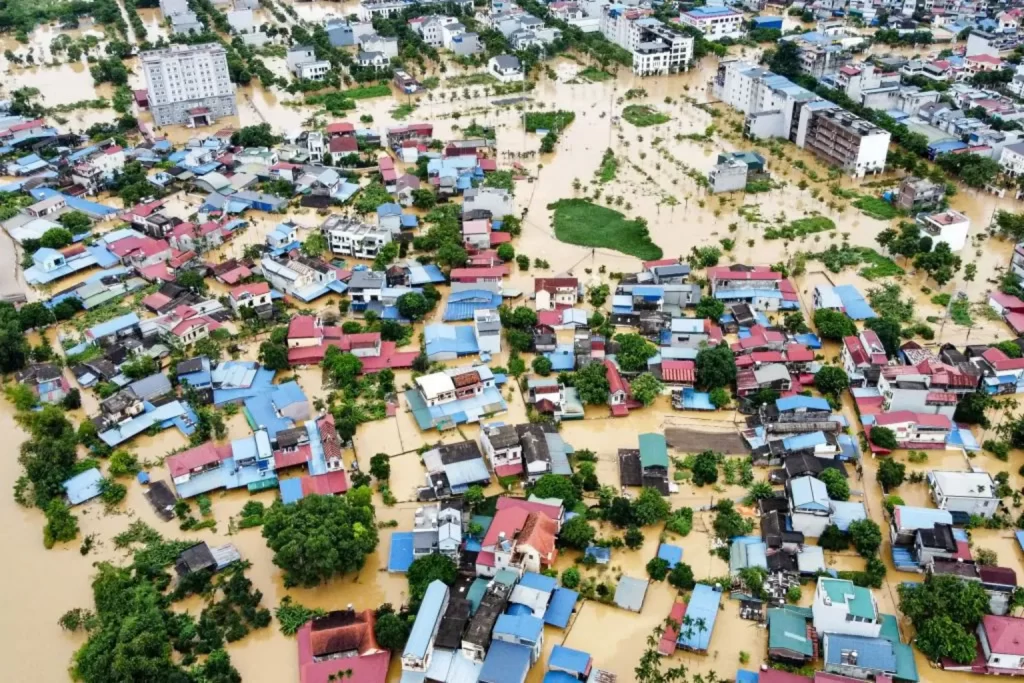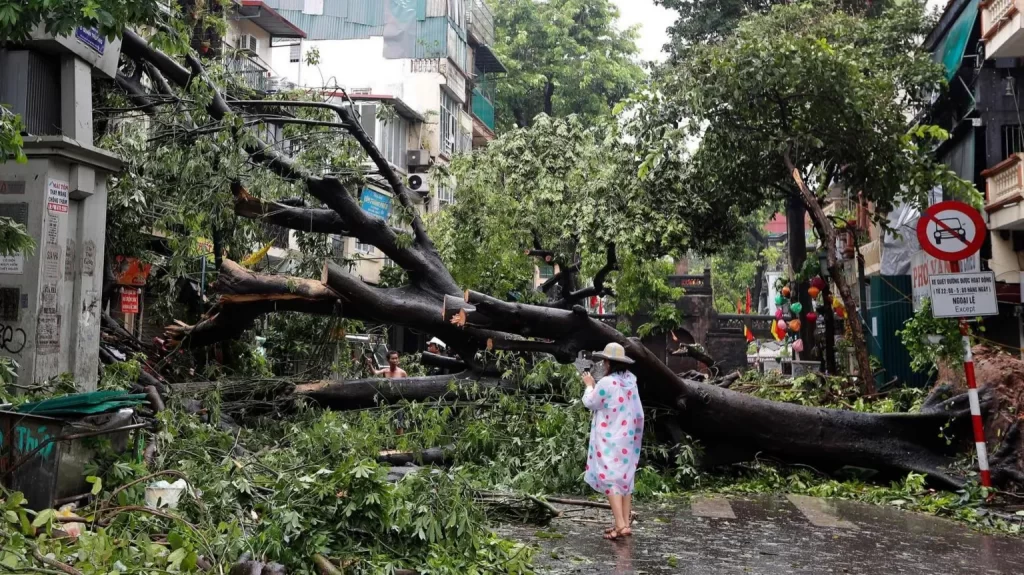The devastating impact of Super Typhoon Yagi continues to unfold across northern Vietnam, with officials reporting at least 127 deaths and 54 people missing as of Tuesday. The storm, the most powerful to hit the country in three decades, made landfall on Saturday and continues to cause heavy rainfall, landslides, and flooding.

Yagi has left a trail of destruction, plunging 1.5 million people into darkness and stranding thousands on rooftops in northern provinces. Desperate pleas for help have flooded social media as residents grapple with the storm’s aftermath.
Phan Thi Tuyet, a 50-year-old resident near the affected area, told AFP, “I have lost everything, all gone. I had to come to higher ground to save our lives. We could not bring any of the furniture with us. Everything is under water now.”
The typhoon, which initially packed winds of nearly 150 km/h (92 mph), has weakened into a tropical depression but continues to pose significant risks as it moves westward. Authorities have issued flood and landslide warnings for 401 communes across 18 northern provinces.
Dramatic footage captured the collapse of the Phong Chau bridge in Phu Tho province on Monday, sending several vehicles plunging into the waters below. The storm has also caused extensive damage to infrastructure, submerging one-story homes in Thai Nguyen and Yen Bai provinces.

In addition to the mounting death toll, at least 752 people have been injured. Before reaching Vietnam, Typhoon Yagi claimed 24 lives across southern China and the Philippines.
Meteorologists note that while the influence of climate change on individual storms is complex, global warming can lead to typhoons with higher wind speeds and more intense rainfall.
As rescue efforts continue, the Vietnamese government has mobilized military and emergency services to assist in evacuation and relief operations. The full extent of the damage is still being assessed as authorities work to provide aid to affected areas.
The catastrophic impact of Typhoon Yagi underscores the region’s vulnerability to extreme weather events and highlights the urgent need for improved disaster preparedness and climate resilience measures in Vietnam and neighboring countries.



